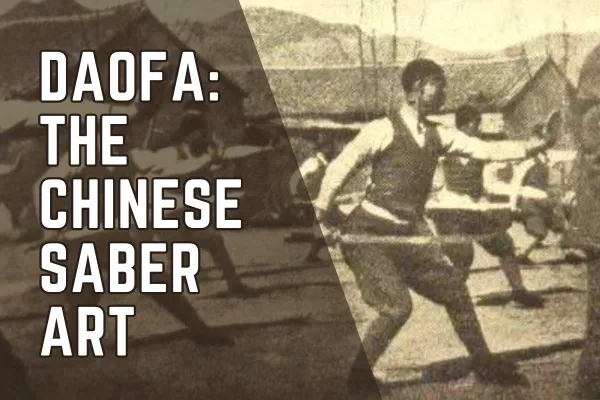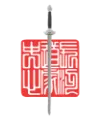
Daofa – The Chinese Saber Art
“The Dao was the soldier’s sword — heavier, more direct, and designed for the battlefield.”
Introduction
In the earliest days of Chinese swordsmanship, both the straight-bladed Jian and the single-edged Dao were battlefield weapons. Over time, however, their roles diverged. The Jian evolved into a refined dueling sword, prized for its balance and versatility. The Dao, meanwhile, remained primarily a soldier’s weapon — built for hard-hitting cuts on the battlefield.
This distinction shaped not only the weapons themselves but also the arts that grew around them: Jianfa and Daofa.
1. The Dao as a Battlefield Weapon
The Dao was generally heavier than the Jian, giving it greater cutting power — an essential feature against armored opponents. By the Song dynasty, most Dao were curved, a design that improved cutting efficiency by reducing blade contact with the target.
By the Ming dynasty, the divide was clear:
Jian – carried by officers and officials, often as symbols of status.
Dao – the soldier’s weapon, designed for war.
2. Characteristics of Daofa
Daofa, the art of the Chinese saber, reflects its battlefield origins:
Linear movements – soldiers fought shoulder to shoulder, leaving no room for wide footwork.
Few thrusts – the curved blade made accurate thrusting difficult.
Powerful cuts – designed to damage through armor, often by sheer force rather than finesse.
Where Jianfa emphasizes agility, adaptability, and cut-thrust combinations, Daofa emphasizes strength, directness, and overwhelming pressure.
3. Types of Dao
Over centuries, the Dao developed into distinct blade shapes, each suited to different needs:
Willow Leaf Dao (柳葉刀, Liǔyèdāo): The most common form from the Ming onwards. Balanced and versatile, with a moderate curve ideal for both cavalry and infantry.
Goose Quill Dao (雁毛刀, Yànmáodāo): A straighter blade with a gentle curve at the tip, allowing for limited thrusting as well as cutting.
Ox-Tail Dao (牛尾刀, Niúwěidāo): A heavy civilian saber with a broad flaring tip, popular in the late Qing. Common in martial arts practice, though not standard military issue.
Ring-Pommel Dao (環首刀, Huánshǒudāo): An early style, often straight and sometimes double-edged, recognizable by the distinctive ring-shaped pommel.
These variations reflect the Dao’s evolution — from battlefield-standard sabers to later civilian practice weapons.
4. Adaptation in the Qing Dynasty
While Daofa began as a straightforward military art, the Qing period saw change. The decline of armor (due to firearms like the matchlock musket) meant swords no longer needed to smash through metal. Soldiers were more likely to patrol streets than march into massed battles.
Dao forms adapted:
Diagonal movements and spins entered the repertoire.
Techniques became freer, reflecting urban combat rather than battlefield lines.
Some Dao systems absorbed tactics reminiscent of Jianfa, though the core remained power-oriented.
5. Blurred Lines, Distinct Flavors
By the late Qing, the line between Daofa and Jianfa was no longer absolute. Some Dao systems incorporated elements of Jianfa, but they never lost their essence:
Daofa retained its aggressive, forward-stepping, power-driven approach.
Jianfa preserved its agile, adaptive, cut-and-thrust style.
Recognizing these distinctions is essential. Without them, practitioners risk flattening both arts into a bland, homogenized version that loses the insights each offers.
📺 Learn More
⚔️ Continue Your Study
At the Academy of Chinese Swordsmanship, we offer step-by-step online programs in Daofa, Jianfa, and Miaodao. Each path honors the unique qualities of the weapon while preparing students for free swordplay and full-contact application.
